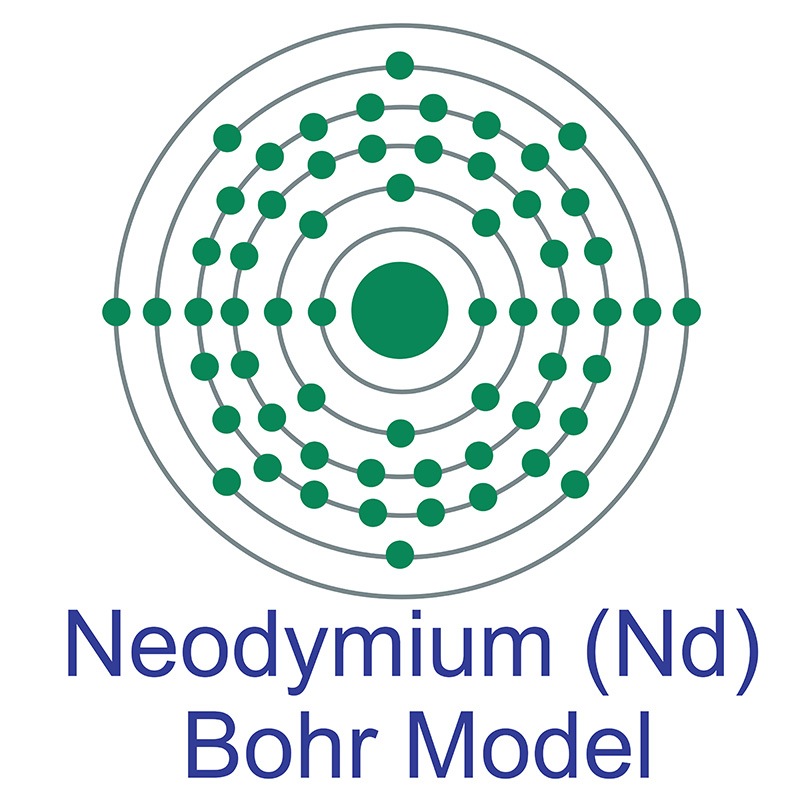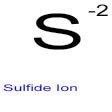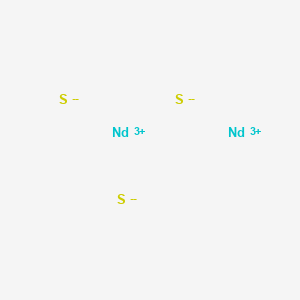SECTION 1. IDENTIFICATION
Product Name: Neodymium Sulfide
Product Number: All applicable American Elements product codes, e.g. ND-S-02
, ND-S-03
, ND-S-04
, ND-S-05
CAS #: 12035-32-4
Relevant identified uses of the substance: Scientific research and development
Supplier details:
American Elements
10884 Weyburn Ave.
Los Angeles, CA 90024
Tel: +1 310-208-0551
Fax: +1 310-208-0351
Emergency telephone number:
Domestic, North America: +1 800-424-9300
International: +1 703-527-3887
SECTION 2. HAZARDS IDENTIFICATION
Statement of Hazard:
Flammable solid, Irritant, Respiratory irritant
Acute Health Hazard:
Irritant to eyes, skin, mucous membranes and respiratory system.
May be harmful by ingestion, skin absorption and inhalation.
Chronic Health Hazard:
Not Available
HMIS Rating:
NFPA Rating:
To the best of our knowledge, the toxicological properties of this chemical have not been
thoroughly investigated. Use appropriate procedures and precautions to prevent or minimize
exposure.
NFPA Rating
H: 1
F: 2
R: 0
GHS Classification in accordance with 29 CFR 1910 (OSHA HCS):
Acute toxicity, dermal (Category 4), H312
Acute toxicity, inhalation (Category 4), H332
Acute toxicity, oral (Category 4), H302
Flammable solids (Category 1), H228
Serious eye damage/eye irritation (Category 2A), H319
Skin corrosion/irritation (Category 2), H315
Specific target organ toxicity, single exposure; Respiratory tract irritation (Category 3), H335
Pictogram:


Signal Word:
Warning
Hazard Statement(s):
H228 Flammable solid.
H302 Harmful if swallowed.
H312 Harmful in contact with skin.
H315 Causes skin irritation.
H319 Causes serious eye irritation.
H332 Harmful if inhaled.
H335 May cause respiratory irritation.
Precautionary Statement(s):
P210 Keep away from heat/sparks/open flames/hot surfaces. — No
smoking.
P240 Ground/bond container and receiving equipment.
P241 Use explosion-proof electrical/ventilating/lighting/equipment.
P261 Avoid breathing dust/fume/gas/mist/vapors/spray.
P280 Wear protective gloves/protective clothing/eye protection/face
protection.
P301+P312 IF SWALLOWED: call a POISON CENTER or doctor/physician
IF you feel unwell.
P302+P352 IF ON SKIN: wash with plenty of soap and water.
P304+P340 IF INHALED: Remove victim to fresh air and Keep at rest in a position comfortable for breathing.
P305+P351+P338 IF IN EYES: Rinse cautiously with water for several minutes. Remove contact lenses, if present and easy to do. Continue rinsing.
P332+P313 IF SKIN irritation occurs: Get medical advice/attention.
SECTION 3. COMPOSITION/INFORMATION ON INGREDIENTS
Chemical Name:
Neodymium sulfide 99.9%
CAS Number: 12035-32-4
SECTION 4. FIRST AID MEASURES
Eye Contact:
Flush eyes with large amounts of water for fifteen minutes. Separate
eyelids with fingers. If irritation persists, seek medical attention.
Skin Contact:
Wash skin with soap and water. If irritation persists, seek medical
attention.
Ingestion:
Do not induce vomiting. Seek medical attention.
Inhalation:
Move to a fresh air environment. Contact a physician if breathing
becomes difficult.
SECTION 5. FIREFIGHTING MEASURES
Flash Point (ºC): Not Available
Explosion Limits: Not Available
Autoignition (ºC): Not Available
Extinguishing Media: Carbon dioxide, dry chemical powder, alcohol-resistant foam, or water
spray
Protective Equipment: Wear self-contained respirator and fully protective impervious suit.
Specific Hazards: May emit hazardous fumes under fire conditions.
SECTION 6. ACCIDENTAL RELEASE MEASURES
Personal Protection:
Wear a self-contained breathing apparatus, rubber boots and gloves,
and disposable coveralls. Dispose of coveralls after use. Remove from
ignition sources if safe to do so. Follow emergency response plan and
contact proper authorities if needed.
Keep unprotected persons away.
Environmental Protection:
Keep spills out of sewers and bodies of water. Dike and contain the
spill with inert material. Absorb on sand, vermiculite or diatomite.
Transfer material to a container for disposal or recovery. Ventilate area
and wash spill site after material pickup is complete.
SECTION 7. HANDLING AND STORAGE
Handling and Storage:
Avoid breathing dust, vapor, mist or gas. Avoid contact with skin and
eyes. Avoid prolonged or repeated exposure. Use only in a chemical
fume hood. Open and handle container with care. Keep ignition sources
away. Store in a tightly closed container in a dry, well-ventilated place.
Sensitivities:
Not Available
Storage Temperature (ºC):
15 to 30
SECTION 8. EXPOSURE CONTROLS/PERSONAL PROTECTION
Engineering Controls:
Use product in a well ventilated area or under a fume hood. Use proper
lab equipment while handling this product. Keep away from
incompatible materials for possible risk of hazardous reaction.
Eye Protection:
Wear appropriate protective eyeglass or chemical safety goggles. Make
sure that there is an eyewash station in your vicinity.
Skin Protection:
Wear impervious gloves and protective clothing.
Respiratory Protection:
Use a NIOSH approved respirator when exposure limits are exceeded or
if irritation or other symptoms are experienced.
SECTION 9. PHYSICAL AND CHEMICAL PROPERTIES
Appearance: Powder
Odor: Not Available
Odor Threshold: Not Available
Flash Point (ºC): Not Available
Autoignition (ºC): Not Available
UEL % by Volume: Not Available
LEL % by Volume: Not Available
Melting Point (ºC): Not Available
Boiling Point (ºC): Not Available
Evaporation Rate: Not Available
pH Value: Not Available
Density (g/cm3): 5.46
Refractive Index (n²ºD): Not Available
Viscosity: Not Available
Solubility in Water: Not Available
Solubility in Other: Not Available
Vapor Pressure (mmHg): Not Available
Vapor Density (Air=1): Not Available
SECTION 10. STABILITY AND REACTIVITY
Stability:
Stable under normal temperatures and pressures.
Incompatibility:
Strong oxidizing agents
Reactivity:
Product may react with incompatible materials to release other hazardous substances.
Conditions to Avoid:
Heat, flame, sparks, other ignition sources.
Hazardous Decomposition Products:
Neodymium oxides, Sulfur oxides
SECTION 11. TOXICOLOGICAL INFORMATION
RTECS Reference: Not Available
Target Organs: Not Available
Toxicity Data: Not Available
Carcinogenicity:
National Toxicology Program (NTP) listed:
Not Available
International Agency for Research on Cancer (IARC) listed:
Not Available
Potential Symptoms:
Not Available
SECTION 12. ECOLOGICAL INFORMATION
Toxicity:
Not Available
SECTION 13. DISPOSAL CONSIDERATIONS
Contact a licensed professional waste disposal service. Dispose in a manner consistent with
federal, state and local environmental regulations.
SECTION 14. TRANSPORT INFORMATION
DOT/IMDG-IATA Shipping Name: Flammable Solid, Inorganic, N.O.S.
UN3178
Class 4.1
PGII
DOT UN Number: UN3178
DOT Hazard Class: Class 4.1
DOT Packing Group: PGII
IMDG Shipping Name:
Flammable Solid, Inorganic, N.O.S.
SECTION 15. REGULATORY INFORMATION
United States
Superfund Amendments and Reauthorization Act (SARA 313) listed:
No
European Union
European Inventory of Existing Chemical Substances (EINECS):
234-820-7
Canada
Toxic Substance Control Act (TSCA) listed:
Yes
Superfund Amendments and Reauthorization Act (SARA 302) listed:
No
Superfund Amendments and Reauthorization Act (SARA 311/312) listed:
No
Canadian Domestic Substances List (DSL) listed:
No
Canadian Non-Domestic Substances List (NDSL) listed:
Yes
SECTION 16. OTHER INFORMATION
Safety Data Sheet according to Regulation (EC) No. 1907/2006 (REACH). The above information is believed to be correct but does not purport to be all inclusive and shall be used only as a guide. The information in this document is based on the present state of our knowledge and is applicable to the product with regard to appropriate safety precautions. It does not represent any guarantee of the properties of the product. American Elements shall not be held liable for any damage resulting from handling or from contact with the above product. See reverse side of invoice or packing slip for additional terms and conditions of sale. COPYRIGHT 1997-2022 AMERICAN ELEMENTS. LICENSED GRANTED TO MAKE UNLIMITED PAPER COPIES FOR INTERNAL USE ONLY.
 The number of electrons in each of Neodymium's shells is 2, 8, 18, 22, 8, 2 and its electron configuration is [Xe] 4f4 6s2. The neodymium atom has a radius of 181 pm and a Van der Waals radius of 229 pm. Neodymium was first discovered by Carl Aer von Welsbach in 1885. In its elemental form, neodymium has a silvery-white appearance. Neodymium is the most abundant of the rare earths after cerium and lanthanum.
The number of electrons in each of Neodymium's shells is 2, 8, 18, 22, 8, 2 and its electron configuration is [Xe] 4f4 6s2. The neodymium atom has a radius of 181 pm and a Van der Waals radius of 229 pm. Neodymium was first discovered by Carl Aer von Welsbach in 1885. In its elemental form, neodymium has a silvery-white appearance. Neodymium is the most abundant of the rare earths after cerium and lanthanum.  Neodymium is found in monazite and bastnäsite ores. It is used to make high-strength neodymium magnets and laser crystal substances like neodymium-doped yttrium aluminum garnet (also known as Nd:YAG). The name originates from the Greek words neos didymos, meaning new twin.
Neodymium is found in monazite and bastnäsite ores. It is used to make high-strength neodymium magnets and laser crystal substances like neodymium-doped yttrium aluminum garnet (also known as Nd:YAG). The name originates from the Greek words neos didymos, meaning new twin.
 The number of electrons in each of Sulfur's shells is 2, 8, 6 and its electron configuration is [Ne] 3s2 3p4. In its elemental form, sulfur has a light yellow appearance. The sulfur atom has a covalent radius of 105 pm and a Van der Waals radius of 180 pm. In nature, sulfur can be found in hot springs, meteorites, volcanoes, and as galena, gypsum, and epsom salts. Sulfur has been known since ancient times but was not accepted as an element until 1777, when Antoine Lavoisier helped to convince the scientific community that it was an element and not a compound.
The number of electrons in each of Sulfur's shells is 2, 8, 6 and its electron configuration is [Ne] 3s2 3p4. In its elemental form, sulfur has a light yellow appearance. The sulfur atom has a covalent radius of 105 pm and a Van der Waals radius of 180 pm. In nature, sulfur can be found in hot springs, meteorites, volcanoes, and as galena, gypsum, and epsom salts. Sulfur has been known since ancient times but was not accepted as an element until 1777, when Antoine Lavoisier helped to convince the scientific community that it was an element and not a compound.
